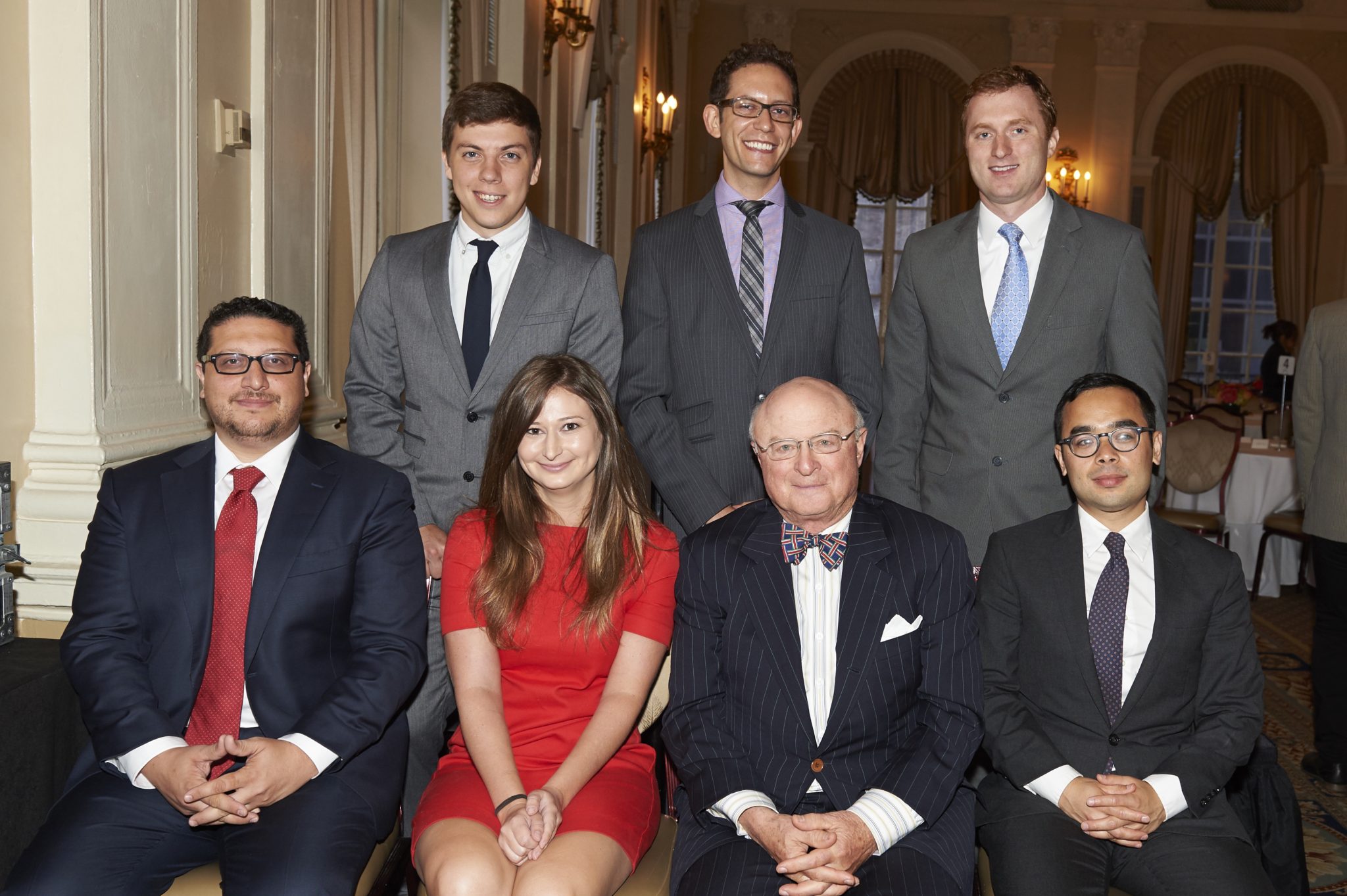
Stories about re-segregation and the neglect of black students, the predatory practices of Warren Buffet’s mobile-home empire, and the spread of pro-Kremlin propaganda on social media won the 2016 Livingston Awards. The $10,000 prizes for journalists under the age of 35 are the largest all-media, general-reporting prizes in the country.
The Livingston Awards also honor an on-the-job mentor with a $5,000 prize named for the late Richard M. Clurman, former chief of correspondents for Time-Life Service (1960-1969) and originator of the Livingston Awards.
Funded by the John S. and James L. Knight Foundation and the University of Michigan to support a new emphasis on digital media efforts, the program continues to see an increase in digital submissions, with 21-percent more than in 2015. Since the funding initiative began two years ago, the number of digital entries increased 125 percent. The overall number of entries increased 53 percent.
Livingston judges Dean Baquet of The New York Times, John Harris of POLITICO, Kara Swisher of Recode and Code Conference, and Ken Auletta of The New Yorker introduced the winners at a luncheon in New York City.
“The judges have a remarkable record in singling out for early recognition journalists who go on to leadership, including Thomas Friedman, Christiane Amanpour and David Remnick,” said Charles R. Eisendrath, founding director of the program at the University of Michigan. “Adding a prize for mentors who provide indispensable guidance at critical moments in a developing career help complete an important circle of celebration.”
The 2016 winners for work published in 2015 are:
Local Reporting
Lisa Gartner, 28, Michael LaForgia, 32 and Nathaniel Lash, 24, of Tampa Bay Times, for “Failure Factories,” an investigation into the high failure rates and violence in five Florida elementary schools.
In 2007, the Pinellas County School Board voted to end racial integration and then failed to deliver on promises of more money, staff and resources to re-segregated schools. Analyzing mountains of data and interviewing more than 100 parents, students, teachers and administrators, the reporters found the five elementary schools had more violent incidents than all of Pinellas County’s other 17 high schools combined.
“We wanted to dig deeper into why our black students were failing at the worst rates in the state,” says Gartner, the Times’ education reporter. “The data led us to what the story was: these five schools and the 2007 vote.”
National Reporting
Mike Baker, 31, of The Seattle Times and Daniel Wagner, 34, of The Center for Public Integrity and BuzzFeed News, for “The Mobile-Home Trap,” an investigation into the predatory practices of Warren Buffet’s mobile-home empire. The series revealed how Clayton Homes, a part of the Berkshire Hathaway conglomerate, and its lending subsidiaries target minority homebuyers and lock them into ruinous high-interest loans.
“Our story showed that Clayton had not reinvented and perfected mobile-home lending, but instead had quietly bought up much of the rest of the industry, creating a near monopoly in many markets,” says Daniel Wagner. “In addition, it showed how reverse redlining, a practice typically associated with lending to urban minorities, is a serious problem in rural areas.”
International Reporting
Adrian Chen, 31, of The New York Times Magazine, for “The Agency,” an investigation into an internet trolling organization located in St. Petersburg, Russia, responsible for spreading pro-Kremlin propaganda and manufacturing false stories about unrest and disaster in the United States.
“The Russian government has been successful at using the internet to discredit political opposition and spread pro-government propaganda,” says Chen. “We think of the internet as enabling revolutions and protests, but it seems equally useful as a technology of government control.”
On-the-Job Mentoring
Charles R. Eisendrath received the Richard M. Clurman Award for his dedication to mentoring young journalists. A former Time correspondent based in Washington D.C., London, Paris and Buenos Aires, Eisendrath came to the University of Michigan as a Journalism Fellow in 1974. He stayed to join the University faculty and later head the master’s program for journalism. In 1980, Richard Clurman asked Eisendrath to design and direct the Livingston Awards. In 1986, Eisendrath became the third director of the Michigan Journalism Fellowships and transformed a financially strapped sabbatical program into the prestigious, globetrotting Knight-Wallace Fellowships and built a $60 million endowment to maintain them in perpetuity. For four decades, he positively influenced the careers and lives of hundreds of journalists. Eisendrath, who is retiring, will donate his prize money to the Livingston Awards endowment.
In addition to Auletta, Baquet, Harris and Swisher, the Livingston judging panel includes Christiane Amanpour, CNN’s chief international correspondent and host of “Amanpour;” Ellen Goodman, author and co-founder of The Conversation Project; Clarence Page, syndicated columnist and editorial board member of the Chicago Tribune; and Anna Quindlen, author.


